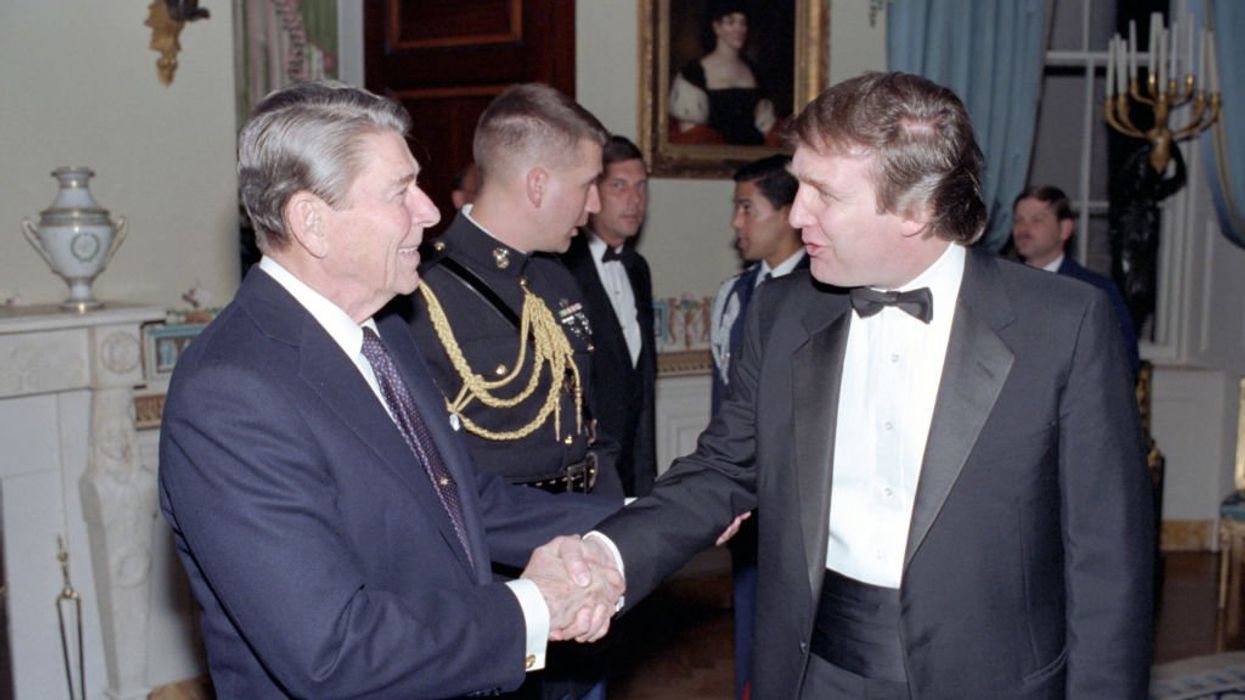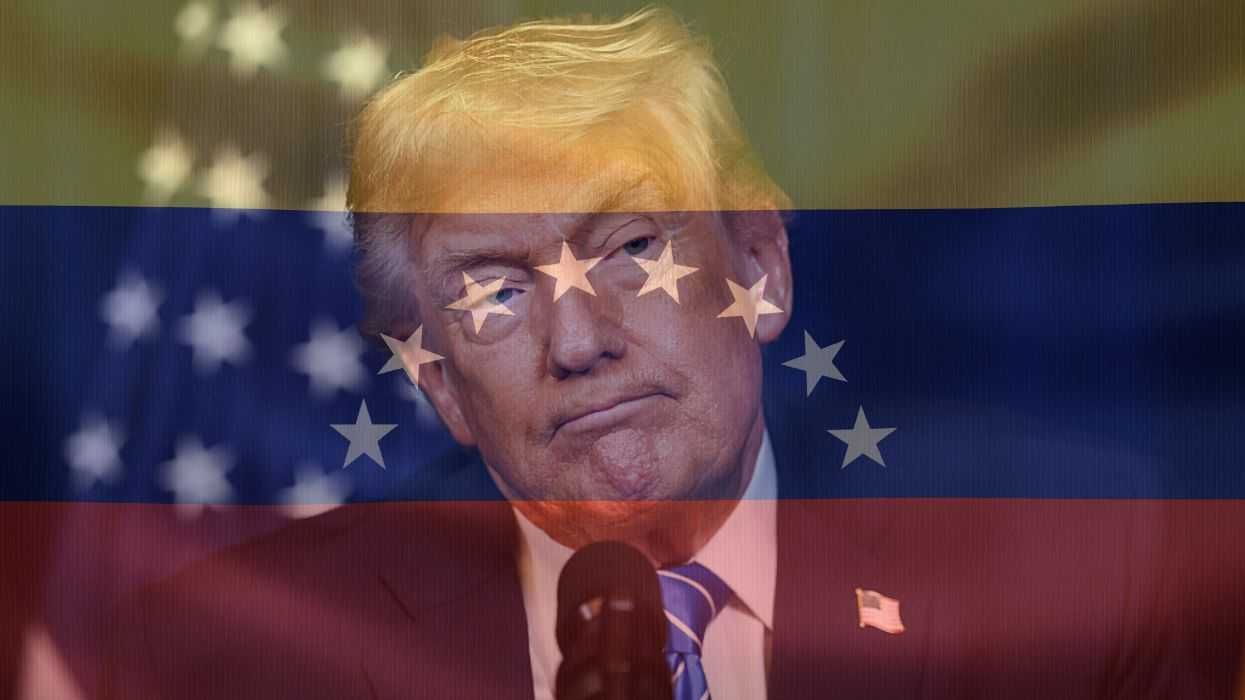Last spring and summer, The Fulcrum published a 30-part series on Project 2025. Now that Donald Trump’s second term has started, Part 2 of the series has commenced.
Presidents are generally confident fellows. They should be. Projecting confidence can be a powerful punch in the political boxing ring. Barack Obama certainly projected confidence; George W. Bush did too. During his presidency, Ronald Reagan was the standard-bearer for projecting presidential self-confidence. And yet, no president in my lifetime acts as confidently as Donald Trump.
But here’s the problem: Confidence is not the same as competence.
In the Fulcrum article published in September entitled “Project 2025: ‘Onward’? More like backwards”, Edwin J. Feulner calls Project 2025 an ode to the Reagan presidency. It hails the Reagan administration for tax cuts, reinforcing the American military, defeating Soviet communism, and restoring a sense of patriotism “that many thought had vanished forever.” Part of Reagan’s success in advancing these conservative pillars was his highly developed sense of self-confidence. He convinced himself that he could get Mr. Gorbachev to “tear down this wall,” and he had the self-assurance to stand at the Brandenburg Gate and say so.
Yet, President Reagan’s confidence was at times his Achilles’ heel, like so many presidents before and after him. Reagan portrayed himself as the ultimate Washington outsider, someone who would come to the nation’s capital and disrupt the conventional power centers. As described in Project 2025’s “Onward” chapter, Reagan “had the will to go against the established political grain in Washington. He also had the ability to speak directly to the American people and convincingly show them how those ideas could work for the benefit of all.”
The history of Reagan is marked by enduring successes and failures. Francis Clines brilliantly captured the reality for Reagan in a 1984 New York Times editorial. Reagan’s tax cuts? Reversed a year later. His attempts to balance the budget? Unsuccessful. However, some of Reagan’s policies have withstood the test of time, although, as with most political agendas, historians might have differing perspectives. Some notable examples are:
- Economic Policies (Reaganomics): His supply-side economic policies, which included tax cuts and deregulation, aimed to stimulate growth. While debated, they are credited with reducing inflation and spurring economic recovery during his presidency.
- Ending the Cold War: Reagan's firm stance against the Soviet Union, coupled with his diplomacy with Mikhail Gorbachev, played a significant role in easing Cold War tensions. The signing of the Intermediate-Range Nuclear Forces (INF) Treaty in 1987 was a landmark moment.
- Tax Reform Act of 1986: This act simplified the tax code, reduced tax brackets, and exempted millions of low-income Americans from federal taxes.
- Revitalizing National Pride: While, of course, subjective, Reagan's optimistic leadership style and emphasis on American values helped restore confidence in the presidency and national identity.
Donald Trump shares a lot in common with the late President Reagan. Both are skilled at the glamour of the television camera. Both appeal to a predominantly white, male segment of the population, and they do so with simple phrases and memorable quips. Both are storytellers. Both claim to be disruptors. Both insist that patriotism is at a premium and that the left is America’s worst enemy. Both are influenced by the media-savvy world of Hollywood. Both are caricatured by their hair.
And both are supremely self-confident. The similarities extend over to the conservative policy agenda as well. Reagan’s attempt to shrink government is now Trump’s pledge to slash large swaths of the federal payroll. Both were met with resistance, especially in the courts.
However, as similar as the two men are, there are significant character traits that speak to the heart and soul of each one that are very different and, thus, might lead to very different results.
Reagan emphasized unity and personal freedom for all, whereas Trump is famous for his divisive rhetoric. Reagan's presidency was marked by a focus on diplomacy, such as his efforts to end the Cold War, while Trump's tenure is characterized by a more transactional approach to international relations.
Reagan was certainly not perfect, and to this day, many question the mass incarcerations in his war on drugs, his illegalities related to the Iran-Contra scandal, and his inability to address the AIDS epidemic. While historians will debate Reagan’s faults, there is one meaningful distinction between Reagan and Trump that should not be overlooked: Ronald Reagan was not a habitual liar.
It simply was not part of his DNA to thrive on deceit, exaggerations, and out-and-out lies. Even Reagan’s sharpest political critics conceded that he was an honest man who had integrity. Honesty meant everything to him. In fact, the only time he admitted to being “down” was during the Iran-Contra scandal, when polls showed that Americans did not believe he was unaware of the nefarious deal his rogue aides cooked up. He was bewildered, angry, and somewhat depressed about the fact that people thought he was lying.
Reagan experienced a lot of harsh criticism over his career, but few have questioned his honesty and that episode bothered him deeply. To Reagan, his word was gold. Contrast this to Donald Trump, who is well known for his lack of truthfulness. A few notable examples are:
- The 2020 Election Fraud Claim: Trump repeatedly and falsely claimed that the 2020 U.S. presidential election was stolen from him due to widespread voter fraud. This claim has been debunked by multiple courts, election officials, and fact-checkers.
- Birthright Citizenship: Trump has falsely stated that the United States is the only country in the world that offers birthright citizenship. In reality, dozens of countries, including Canada and Mexico, also grant automatic citizenship to people born on their soil.
- Inauguration Crowd Size: Trump claimed that the crowd at his 2017 inauguration was the largest in history, despite photographic evidence and official estimates showing otherwise.
The Washington Post reported in January of 2021 that Trump's false or misleading claims totaled 30,573 in four years.
But who’s counting?!
The differences between the two men don’t end with truthfulness. The men were starkly different with respect to humility.
Unlike Trump, Reagan was often recognized for his humility. For example, during the aftermath of the 1981 assassination attempt on his life, Reagan displayed remarkable grace and humility. He reassured those around him with lighthearted remarks, even in the face of danger, and maintained a sense of humor that endeared him to many. His ability to connect with people and acknowledge the contributions of others also reflected his humble nature, a quality that is in stark contrast to President Trump.
Humility is simply not a trait associated with Donald Trump. The lack of humility embodies Trump’s persona in so many ways:
- "The beauty of me is that I'm very rich."
- "Show me someone without an ego, and I'll show you a loser."
- "I could stand in the middle of Fifth Avenue and shoot somebody, and I wouldn't lose any voters."
- "Nobody takes things more personally than me."
- "My whole life is about winning. I don't lose often. I almost never lose."
- He described himself as "like, really smart" and "a very stable genius.”
It is difficult to analyze whether President Trump's confidence, propensity to lie, and lack of humility are part of a grand strategy or just who he is. It is probably some combination of both.
We are only a month into Trump's second term, so it is risky to predict outcomes, but one thing can be said with certainty with respect to Trump's honor and integrity. I think back to the iconic line in the 1988 U.S. Vice Presidential debate, when Senator Lloyd Bentsen, the Democratic nominee, said to Senator Dan Quayle, “You're no Jack Kennedy.”
I can say with certainty to Donald Trump, “You’re no Ronald Reagan.”
Yet both men, as written in Project 2025, called for a restoration of the past that they romanticized with greatness. Project 2025 wants a renewal of a time when policies often ignored the voices of marginalized communities, the rights of the LGBTQ+ community were ignored, and workplace discrimination against women was far more common than today—just to name a few of the more restrictive policies of the 1980s. This backward-looking emphasis of Project 2025 glorifies the past while ignoring the problems that have since been rectified or at least advanced.
However, the test of our nation lies not in the past but in our ability to look forward. In the words of Geroge Bernard Shaw: "We are made wise not by the recollection of our past, but by the responsibility for our future."
Our nation will only be great if we can unite around shared values and live within a government that is “of the people, by the people, for the people,” as so eloquently described by Abraham Lincoln.
David Nevins is co-publisher of The Fulcrum and co-founder and board chairman of the Bridge Alliance Education Fund.
Samples of Phase 2 articles about Project 2025
- Project 2025: Part II
- Department of Education
- USAID
- Department of Homeland Security
- Changes to the Department of Veterans Affairs
- Elon Musk’s DOGE Pursues Partisan Agenda
- Elon Musk’s attack on the Department of Labor
- The Foreword
- Diversity, Equity, Inclusion
- A cross-partisan approach
- An Introduction
- Rumors of Project 2025’s Demise are Greatly Exaggerated
- Department of Education
- Managing the bureaucracy
- Department of Defense
- Department of Energy
- The Environmental Protection Agency
- Education Savings Accounts
- Department of Veterans Affairs
- The Department of Homeland Security
- U.S. Agency for International Development
- Affirmative action
- A federal Parents' Bill of Rights
- Department of Labor
- Intelligence community
- Department of State
- Department of the Interior
- Federal Communications Commission
- A perspective from Europe
- Department of Health and Human Services
- Voting Rights Act
- Another look at the Federal Communications Commission
- A Christo-fascist manifesto designing a theocracy
- Voters oppose the far-right playbook
- The Schedule F threat to democracy
- The Department of Justice
- A blueprint for Christian nationalist regime change
- How anti-trans proposals could impact all families
- The Federal Reserve
- A threat to equitable education




















